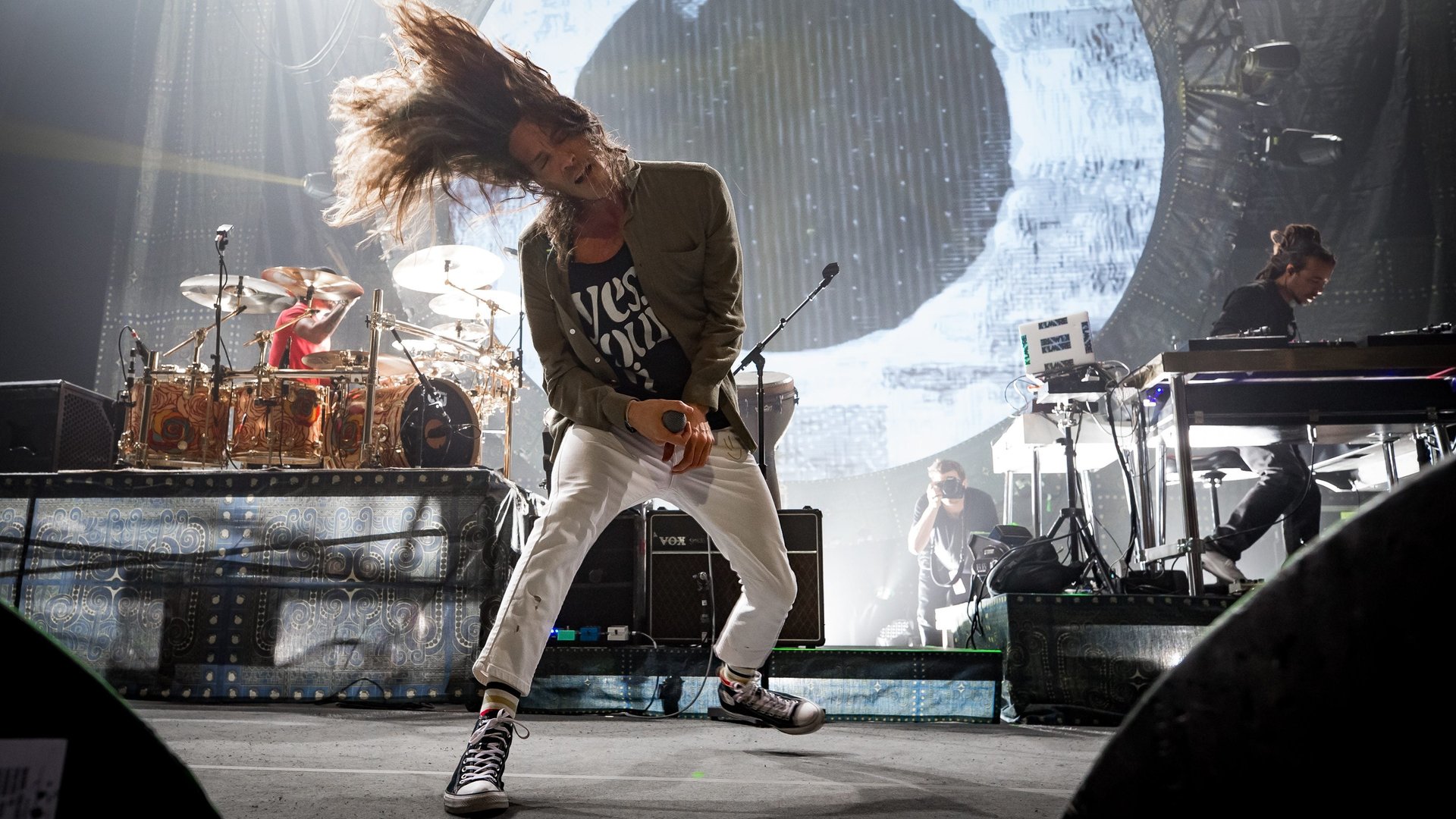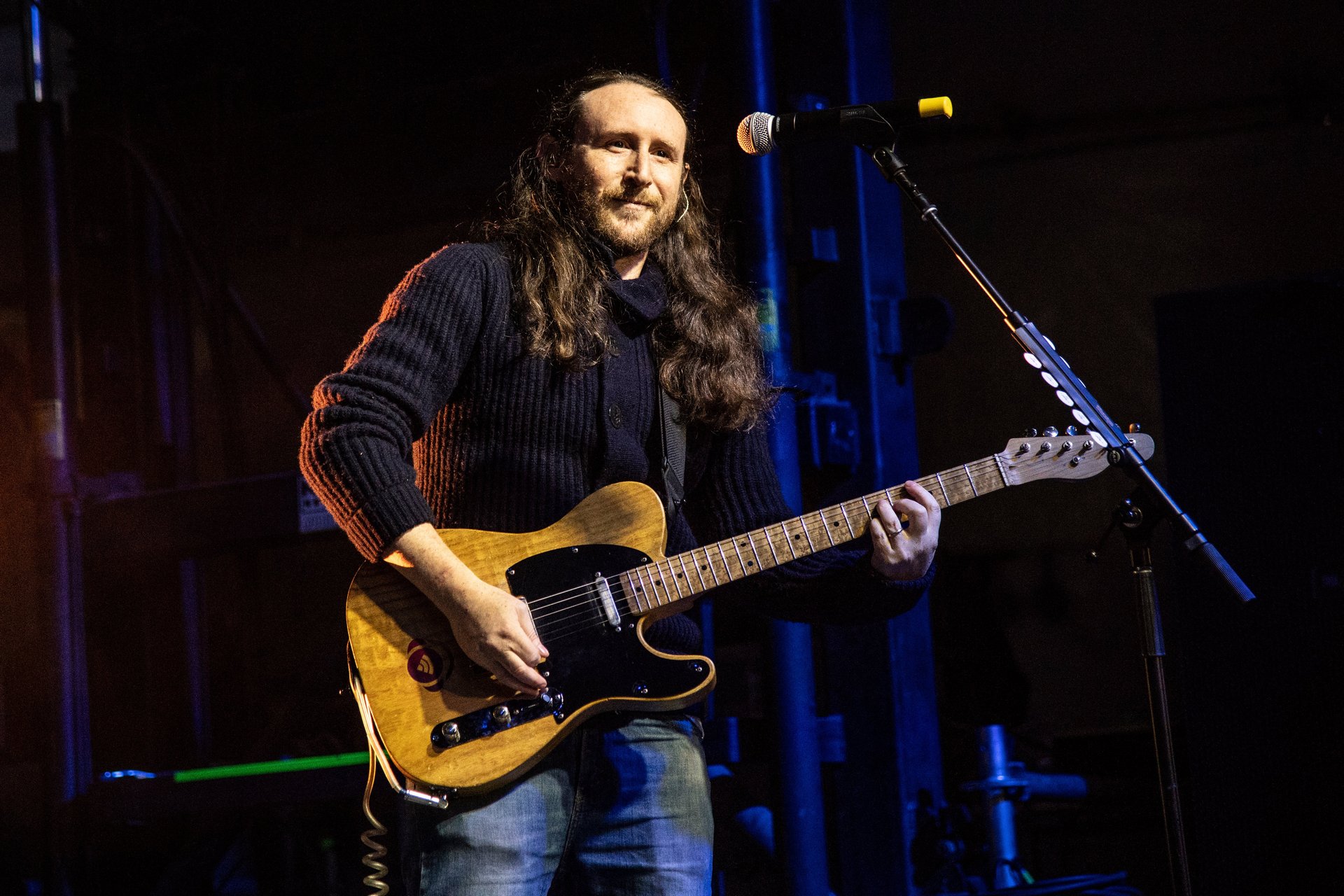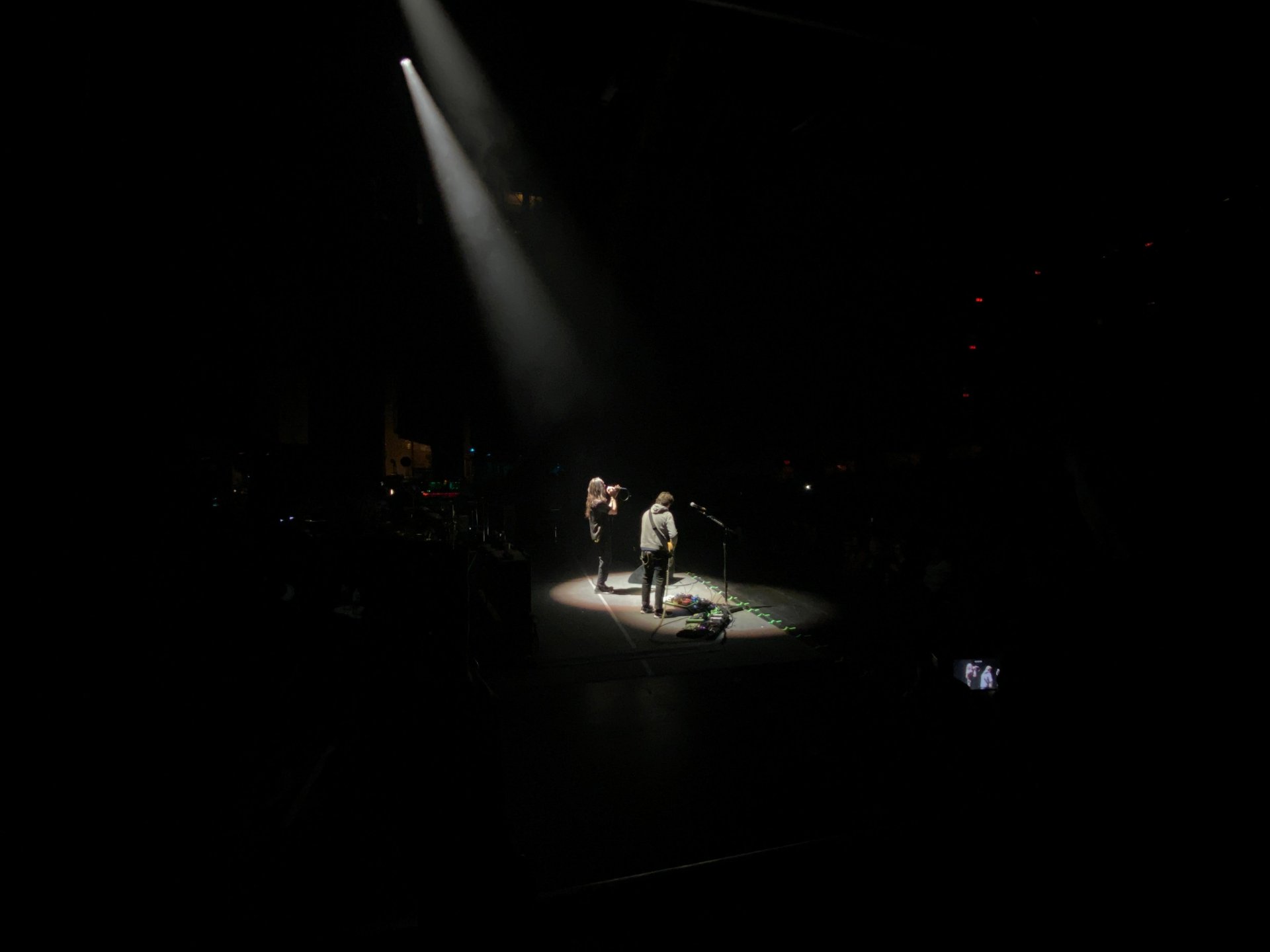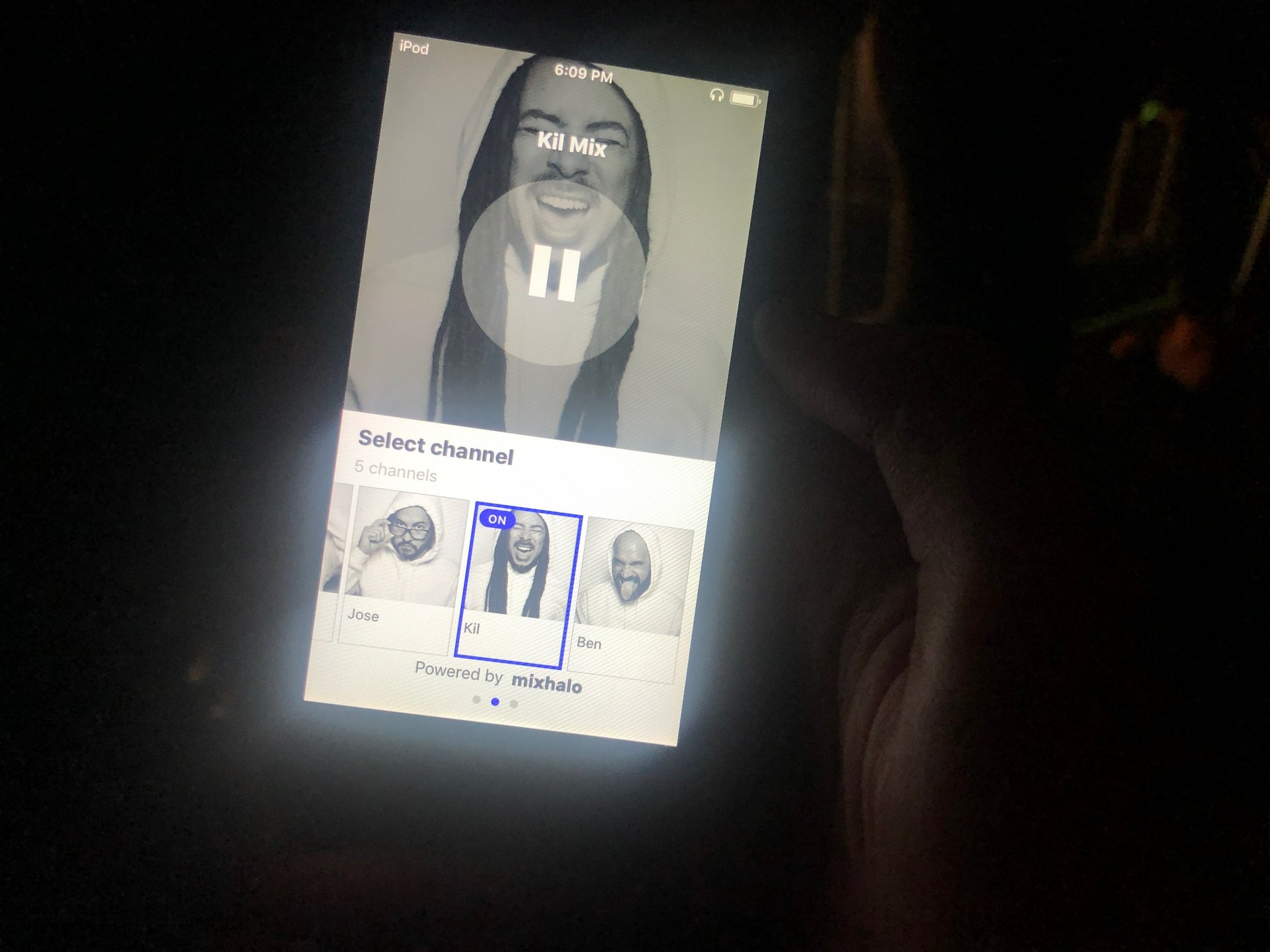The future of live music lives on your smartphone
Think back to the first time you saw a high-definition TV program.


Think back to the first time you saw a high-definition TV program.
After a lifetime of looking at standard-definition shows (and perhaps fuzzy black-and-white ones before that), you likely felt that a new world was opening in front of your eyes, allowing you to see television in much the same way you take in the real world. You probably never wanted to go back.
Something similar happened to me recently, at a concert for the rock band Incubus.
Incubus, who you may remember from their seminal 1999’s single “Drive,” use a new technology from a startup called Mixhalo to enhance its live shows. All concertgoers have to do is install Mixhalo’s app, connect to the concert, and plug in their headphones. I got to test it out when Incubus recently played in New York, and was greeted with a live-music experience like none I’d ever had.
Using the app, I could hear the mix of the musicians coming right from the venue’s soundboard, as the band themselves were hearing it. I could choose to listen to specific mixes of the show, swapping between lead guitar parts, pulling out singer Brandon Boyd’s vocals for the most emphatic parts, and at other times listening in to the “alien sounds,” as DJ Chris Kilmore calls them, that he produces and are often lost in the cacophony of a live performance. I could turn up or down the volume of the show and flit between mixes as much as I’d like. I was standing to the side of the stage, and although the band was facing outwards, it felt as if they were just playing for me, and I managed to somehow forget there were thousands of fans around me. I could actually make out what Boyd was singing, and hear the drum lines, instead of being subjected to the multitude of adoring fans, who, although not lacking for energy or enthusiasm, often don’t have the vocal chops or rhythmic skills of the band onstage.
Mixhalo changes the fan’s experience at live events, allowing them to hear the show as the band (or sound engineer) intended. It no longer matters whether Madison Square Garden has poor acoustics or if you’re sitting too far away from the PA system—with Mixhalo, every seat in every venue can hear perfectly. Thanks to Incubus.
How Mixhalo came to be
Mike Einziger, the guitarist in Incubus, told Quartz that he had a slow-burning realization of the idea for Mixhalo over the better part of two decades. Around 2000, he, and many other touring musicians, started wearing radio packs and headphones that allowed them to hear the soundboard’s mix of what they were playing at concerts. Live venues are often so loud that without technology like this, it can be difficult to hear yourself—even with onstage speakers (called monitors) pointed at you—let alone your bandmates.

Eventually, that germinated into an idea. “Onstage we’re having a different experience than people are having in the audience,” Einziger said. “I had the thought in my head that it would be interesting if people in the audience could hear what I’m hearing.”
In 2016, while rehearsing for the Grammys, the band had a guest listen to one of their rehearsals; a member of their crew asked if he’d like to borrow a spare radio pack so he could hear what the rehearsal sounded like to the musicians. Einziger had “an epiphany” when he wondered if it would be possible to replicate the radio pack on regular smartphones.
He went home and discussed the idea with his wife, Ann Marie Simpson, a professional violinist and co-founder (along with Einziger) of the biotech firm Versicolor Technologies. Simpson ran with his idea and thought of ways the technology could be applied to pretty much any decently sized gathering of people, from sports events to stops on a campaign trail. “As a couple, we go off on these brainstorms,” Einziger noted.
Through connections Einziger had made during his time as a student at Harvard (where he earned a degree while Incubus was on hiatus in the late 2000s), the two were able to connect with engineers and music lovers who worked at cloud networking company Cisco Meraki, some of whom ended up joining them when they turned the idea into a startup. The couple had no prior experience in radio networking technology. “In our naivety we just thought, ‘Why don’t we just change how wireless technology works?’” Simpson said.
And in a way, they did.
How it works
Although your phone sees a Mixhalo network like any other wifi network, the company’s proprietary technology is actually closer to how a radio network functions. On a wifi or cellular network, the more people connecting to an access point, the slower the connection to each individual device will be, as each person vies for the amount of data they need. With a radio broadcast, that doesn’t happen—the number of people who tune in to a radio broadcast from their car doesn’t affect the quality of anyone else listening. “The first person who logs on to the Mixhalo network will have the same experience as the 10,000th,” Simpson said.
This primarily comes down to the way the network is set up. On wifi or cellular, you have to apportion just about as much bandwidth for information flowing to a smartphone as coming out of it. Using the internet is a constant exchange of data, whether you’re listening to a song on Spotify and the network needs to know where you are and whether you’re moving, or if you’re playing a game online and the network needs to send you game visuals that change as you move the controls. With Mixhalo, the majority of the data is just flowing to devices, with little coming back in return. This allows for considerably more people to connect to a single Mixhalo access point to stream high-quality audio than they would if they were all connected over traditional wifi.
Simpson said that just about any band would be covered by Mixhalo, as the technology could theoretically stream up to 150 different channels at once. Even the London Philharmonic Orchestra doesn’t have that many musicians in it. But this could prove massively useful for events where many people want to hear one thing—that could be as simple as providing everyone in an audience with good sound, even if they’re in the nosebleed seats, or as complex as a UN general assembly, where a diplomat’s speech could be being translated into dozens of languages at once.

Mixhalo primarily charges customers fees based on the capacity of their events—the denser and larger the event space is, the more base stations would need to be deployed. The company charges a fee per performance, and Simpson says that setting the technology up is no more difficult for a live event’s crew than hanging lights or a public-address system. The rock band Aerosmith, currently in residency in Las Vegas, offers Mixhalo as part of a VIP experience to high-paying customers each show. And the Staples Center in Los Angeles, home to the LA Clippers, Kings, and Lakers, also recently signed a deal to offer Mixhalo at events.
Live experiences are going to change
I’ve been testing out the latest Apple Watch recently, which has an app that can tell you how loud your environment is. Anything over 80 decibels causes the app to turn yellow and remind you that longterm exposure to environments like this “can lead to permanent damage.” The average rock concert hits around 120 decibels. The watch app was angry with me the entire time I was at Incubus’s show, but my ears were not: Using a pair of noise-canceling Beats earbuds that Mixhalo had leant me, I was hearing the concert at a comfortable volume. It might make me sound old and uncool, but the idea of being able to enjoy loud shows without losing my hearing seems like a win-win. With around 20 years of live concerts under my belt already, I may be a lost cause (my girlfriend tells me I’m deaf all the time), but technology like Mixhalo’s could save many ears in the future.

More broadly, Mixhalo could reinvent how we experience live events. The company’s technology allows it to push a lot of data to multiple devices at once, but it can also receive a little bit back, meaning it can be used for other purposes, too.
Simpson and Einziger envision scenarios where Mixhalo’s app could push users to listen to different mixes of the show that are popular with other members of the audience, or send messages to the crowd to buy merchandize or concessions. Beyond concerts, the technology could enhance other live events: It’s not hard to imagine going to a baseball game and having a play-by-play announcer in one ear, and a mic’d-up player in the dugout in the other. In basketball, you could even see something like live-betting as a player gets ready to take free throws, happening inside Mixhalo’s app. When I was at the Incubus show, a delegation from a US sports leagues was also in attendance, thinking up all sorts of novel uses for the technology on the fly.
And there’s another safety aspect Mixhalo brings—security. Being able to relay messages to anyone in the audience at an event on their phones, instead of hoping they hear a public-address message, could lead to better crowd control at large events. It could also help with any security incidents, which unfortunately are at the top of mind for many people attending live events these days.
But for anyone concerned that technology like Mixhalo’s would cut them off from the camaraderie of a live show, or from, you know, the actual experience of being at an event in person—don’t fret. When Incubus played “Drive” at the concert, everyone who was demoing the technology was singing along and smiling with those around them, and because they had the feed from the soundboard going right into their ears, they were on beat and in tune. It was simply one of the most enjoyable live concerts I’ve ever experienced. Because I could actually hear it.
Einziger argued that his company’s technology is democratizing the experience of going to a live event. For years, rock stars have had spare radio packs that they’ve handed out to only the most I of VIPs—“the girlfriend of the lead singer,” as Einziger put it—allowing them to experience the show like the band does, while the crowd gets their ears blown out. Mixhalo allows anyone access to that experience, as long as they have a smartphone and some headphones.
And it was one of those VIPs who gave Einziger and Simpson the kick they needed to turn their dream into a reality. Early on, before they’d built the app experience, Tesla CEO and SpaceX founder Elon Musk was given a sneak peak at what they were doing. He was in the wings at an Incubus concert with his children, passing a custom radio back between himself and his kids. After the show was over, Einziger recalled, Musk said of the concept: “If you could build this, it would be transformative.”
I may not be building rockets to Mars, but years later, I felt the same way.